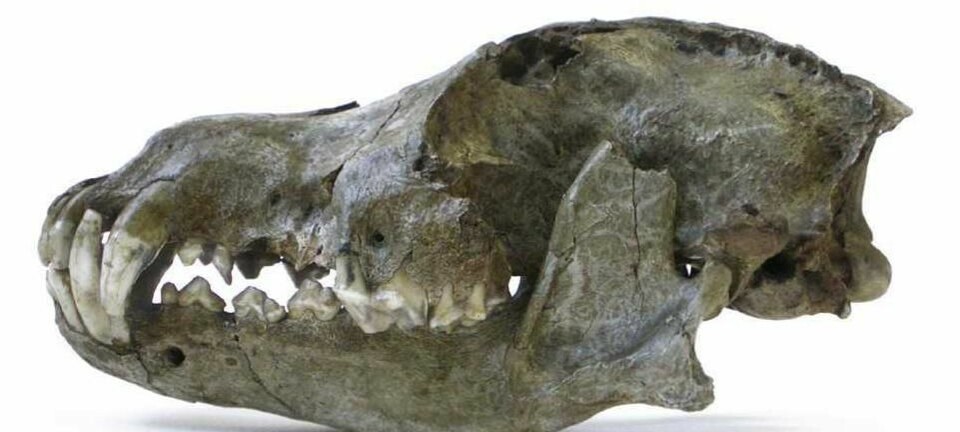
When and where did wolves become dogs?
Did dogs become domesticated in Southeast Asia or Europe? New study challenges recent research.
New research has mapped the history of man’s best friend, as told through their DNA.
They conclude that our four-legged friends originated from a group of wolves in Southeast Asia around 33,000 years ago. But it wasn’t until about 15,000 years later that these, soon to be domesticated, dogs spread out around the world.
Some went on to reach Europe around 5,000 years later. Others headed back to Asia, to North China, where they formed a second wave of migration into Siberia and North America some 10,500 years ago.
When and where dogs first diversified from their wolf ancestors has been fiercely debated over the last 10 years, and these recent results starkly contradict earlier studies, which suggested that Europe or the Middle East were the home of dog domestication.
“Over the last few years, there’s been a few papers claiming that dogs came from various different places, including Europe and the Middle East,” says co-author Peter Savolainen, associate professor in evolutionary genetics at Department of Gene Technology, KTH-Royal Institute of Technology, Sweden.
“We published a paper ourselves in 2009 looking at mitochondrial DNA, in which we first suggested dogs came from Southeast Asia. Now we have sequenced whole genomes of dogs from around the world, and the results agree--they originated in SE Asia and diverged from modern wolf about 33,000 years ago,” says Savolainen.
The new research is published in the journal Cell Research.
Controversy over contradictory studies
Salvolainen and colleagues sequenced the genome of 46 modern dogs from Asia and around the world.
“The new thing here is that we’ve sequenced the whole genome and we have a better geographical coverage of samples than other studies. So while there are still things to do, I’m ninety-five per cent sure that this is where dogs split away from their wolf ancestors,” he says.
According to Savolainen the discrepancy between their conclusions and previous research can be explained by the lack of samples from Southeast Asia in these earlier studies.
“Other studies had samples near to Southeast Asia, from Nepal for example, but non actually came from this region,” says Savolainen.
“If you don't have a sample form the actual place of origin, you might get close but you won’t get the right answer,” he says.
But some scientists are not convinced.
Colleague: impressed but not convinced
Olaf Thalmann from Uppsala University, Sweden, was the lead-author on a study in the journal Science in 2013 that named Europe as the place of origin for dog domestication.
He describes the study as impressive, but he is not convinced that our furry friends originated in Southeast Asia.
"I think this study uses a very impressive dataset and sophisticated analyses. However, I do have my concerns with the conclusions that the authors draw,” says Thalmann.
Thalmann questions whether the dogs studied are truly representative of a worldwide collection of dogs.
“It’s somewhat surprising to see the sample distribution of indigenous dogs used in the study. Aside from some samples [that] originated from a single location in Africa, all other indigenous dogs are from China,” he says.
“This is an important aspect since the entire argumentation regarding a potential origin in China is based on the fact that [indigenous] dogs in China are the most diverse. So one could simply ask, is it really that surprising that China carries the highest diversity of indigenous dogs, given the sampling used in the study?”
Savolainen disagrees.
“It’s actually a worldwide sample, only 25 per cent were from Southern East Asia. However, more samples would be good. We’re working on that and getting very similar results,” says Savolainen, adding that a comparison of their data with other dog genomic data from around the world corroborates their results.
Thalmann also suggests that the arrival date in Europe of 10,000 years ago is in direct contrast with the fossil record, which records evidence of dogs in Europe 12,000 to 14,000 years ago.
But Savolainen does not see the two as mutually exclusive: explaining that the uncertainty of the timing of this arrival date and the age of the fossils are large enough to encompass this time frame.
Ancient DNA the key to the puzzle
According to Thalmann, it is problematic to use modern dog genetics to infer where domesticated dogs originated, due to their long history of hybridisation and artificial selection by humans. They can no longer be considered a natural population, and this means that scientists need to look further back in time, with ancient dog DNA.
“I don't think the mystery of where dogs came from has been solved yet. We need the ancient [DNA] material to know for sure,” says Thalmann.
This is echoed by Professor Greger Larson, director of the Palaeogenomics & Bio-Archaeology Research Network, in the Department of Archaeology, University of Oxford, UK. Larson was not involved in the new research but studies ancient DNA.
“It’s great to see all these new dog domestication studies with ever bigger datasets and ever more complicated analyses,” he writes in an email to ScienceNordic.
“[But] this is still all DNA from modern individuals and I feel that no matter how many modern genomes we have, we’re always going to be peering through an onion trying to wonder what’s on the inside,” he writes.
All three scientists agree that without this ancient DNA, the jury is still out.
“I would say nothing is known for sure until we can test these exciting hypotheses regarding the timing, location, and subsequent history of dog domestication,” says Larson.
Scientific links
- Out of southern East Asia: the natural history of domestic dogs across the world. DOI 10.1038/cr.2015.147
- Complete Mitochondrial Genomes of Ancient Canids Suggest a European Origin of Domestic Dogs. DOI: 10.1126/science.1243650









